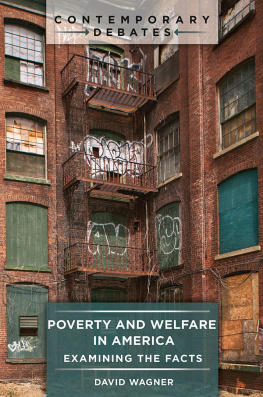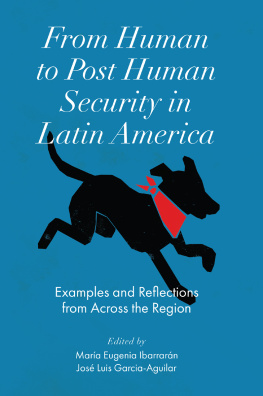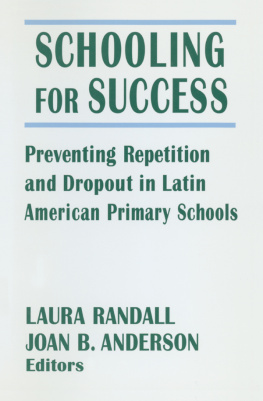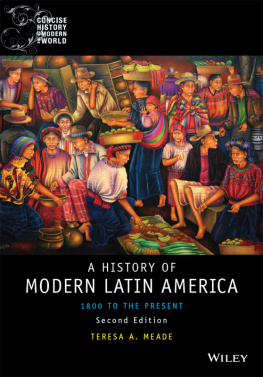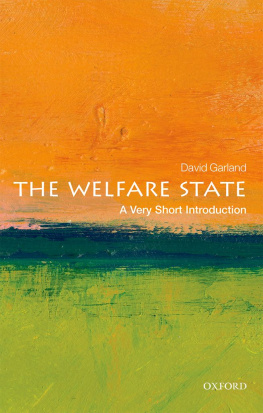First published 2002 by Westview Press
Published 2018 by Routledge
711 Third Avenue, New York, NY 10017, USA
2 Park Square, Milton Park, Abingdon, Oxon OX14 4RN
Routledge is an imprint of the Taylor & Francis Group, an informa business
Copyright 2001 Taylor & Francis
All rights reserved. No part of this book may be reprinted or reproduced or utilised in any form or by any electronic, mechanical, or other means, now known or hereafter invented, including photocopying and recording, or in any information storage or retrieval system, without permission in writing from the publishers.
Notice:
Product or corporate names may be trademarks or registered trademarks, and are used only for identification and explanation without intent to infringe.
Library of Congress Cataloging-in-Publication Data
Post David
Childrens work, schooling, and welfare in Latin America/by David Post
p. cm
Includes bibliographical references (p.) and index.
ISBN 0-8133-3915-4 (pbk.)
1. Child laborLatin America. 2. EducationLatin America 3. Child welfare
Latin America. I. Title
HD6250.L292 P67 2002
331.3'1'098dc21
2001045000
ISBN 13: 978-0-8133-3915-3 (pbk)
Questions about the future of child labor and basic education are supposed to be settled matters, at least in most countries of Latin America. Not, of course, because all Latin American children succeed in school or because the region has no underage workers. Rather, these matters are supposedly "settled" because of the inexorable movement toward those ultimate resolutions. In one familiar version, ever-more-democratic societies embrace global human rights to create a childhood free of exploitation, as farm families and street vendors, industrialists, and the police all accept this universal norm. In another version, world trade will create incentives for nations and families to invest in the stock of their human capital: Early labor becomes bad business for all. A sociological variant sees isomorphic institutions that inevitably standardize the regulation of youth through similar types of school systems and welfare safety nets. More children are officially students whose parents have registered them in schools. Proportionally fewer, it is then supposed, must be working. The forces of economic growth and the spirit of progress lift entire societies, as the experiences of childhood everywhere come naturally to resemble those enjoyed by children in what were once called "first world" countries.
Several glitches now appear in this rosy scenario. At the end of the twentieth century, the World Trade Organization failed to compromise between competing "universal norms" of neoliberal, opened markets for nations and core labor standards to protect all workers. The International Labour Organization (ILO) estimated that there remained 250 million working children in the world (albeit many of them attending school). Not in dispute was the disturbing truth that few of the world's poorer countries ever came close to meeting the ambitious goals set by the International Labour Organization's 1973 Convention on the minimum age for work (age fourteen). Few developing countries even had formally ratified it. And the ideals embodied in the 1989 United Nations Convention on the Rights of the Child remain just that: important ideals, yet to be legislated into national laws in much of the world. With the unequal economic growth characteristic of the 1990s, many nations, including parts of Latin America, became home to millions of children who resembled "grit in the prosperity machine" (Loker 1999). By 1995, the World Bank's annual report had concluded, "There is no worldwide trend toward convergence between rich and poor workers. Indeed, there are risks that workers in poorer countries will fall further behind, as lower investment and educational attainment widen disparities." And J. Brian Atwood, former head of the U.S. Agency for International Development, had these dark words upon stepping down: "It is time to end the hypocrisy. Globalization is thus far leaving out about two-thirds of the world... If economic growth is limited to an already educated elite, then it has limited development benefit and it is a poor indicator of sustainability" (cited in M. Levinson 1999, p. 21).
We might blame an uneven demographic transition for the sorry state of childhood in Latin America, at least in part. Although birth rates have declined in the region as a whole, the decline was much slower among the poor. One result is that increasing proportions of children live in poverty, even when poverty rates do not increase. At the same time, each nation's population includes proportionally fewer children. Children are thus receiving lower priority as social policy concernsthey become easier to ignore politicallyat the very moment when poverty is becoming more concentrated among them (McNicoll 1997, p.48). In fact, the problem is even worse because, as we will see, the adjustment shocks during the 1980s exacerbated poverty among the families who already were poor prior to the ascendency of neoliberalism.
Against this backdrop, the welfare of childrenthose who can least advocate for themselvesbecomes a humanitarian as well as a political preoccupation. The full development of our potential requires a time periodchildhoodthat is protected from abuse, hardship, or exploitation. Although poverty among children may be impossible to eradicate, the searching question for social scientists is just how inexorable is the supposed tide uplifting childhood everywhere. In starkest terms, is there any need for nations to do anything? Is there, a case for leadership or intervention by governments, non-governmental organizations, lending agencies, or multinational institutions such as the ILO and the U.N.? Finally, if there is a need for leaders, what should be their priorities for children and for which populations: the minority who are not in school, or the majority who are full-time students?
The broad view by respected economists like Gary Becker (1997) is that a common history is shared by today's wealthy countrieswhere child labor became irrelevant as incomes roseand nations of the Southwhere the slow retreat of child labor may similarly occur as economies become more productive and as individual incomes grow. During the industrial revolution, argues one prominent historical account, "children worked... because their families were poor; as family income increased, child labor decreased" (Nardinelli, 1990, p.112). In nineteenth century Europe, there was little apparent effect of law, public policies, or even school availability on children's work. Smelser (1991) argues that, in an important sense, Britain's compulsory school legislation followed changes in the family economy that freed children for education.
Will the exploitation of Latin American children stop of its own accord when it stops making sense to desperate families? Perhaps, but that too-facile question requires a complex response. A recent World Bank summary of child labor reduction agreed that, although "poverty reduction is the most powerful long-term approach... this a lengthy process that, even when successful, will in practice tend to raise the incomes of the poor unevenly, thus leaving room for a substantial incidence of child labor for some time to come (Fallon and Tzannatos 1998, p. 10). In the meantime, can children be expected to forgo labor or to attend school full time while poverty persists? AFL-CIO President John Sweeney, testifying before the U.S. Senate's foreign relations committee, argued against waiting for global prosperity: (October 21, 1999) "There are those who assert that child labor must be tolerated, that it can only be overcome when poverty is vanquished, that poor children have no alternatives to exploitation and abuse 'necessary' to a nation's economic strength. We reject these arguments. We believe that economic development is based in education; that school is the best place for all children, regardless of their personal social standing or their nation's economic vitality."





